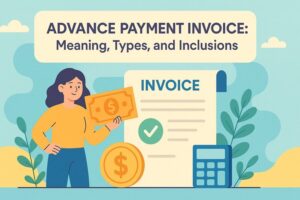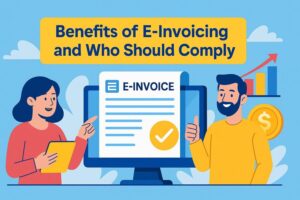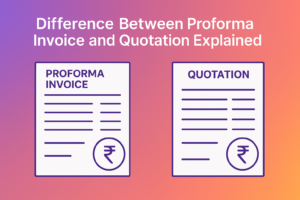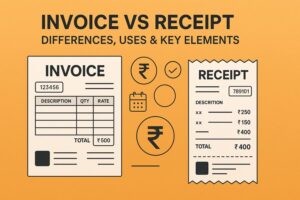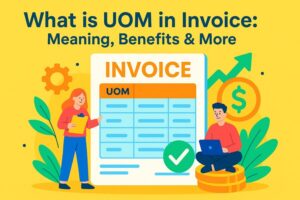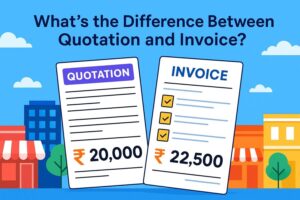Invoice Factoring vs Invoice Discounting: What They Are and the Key Differences
- 27 Nov 25
- 5 mins
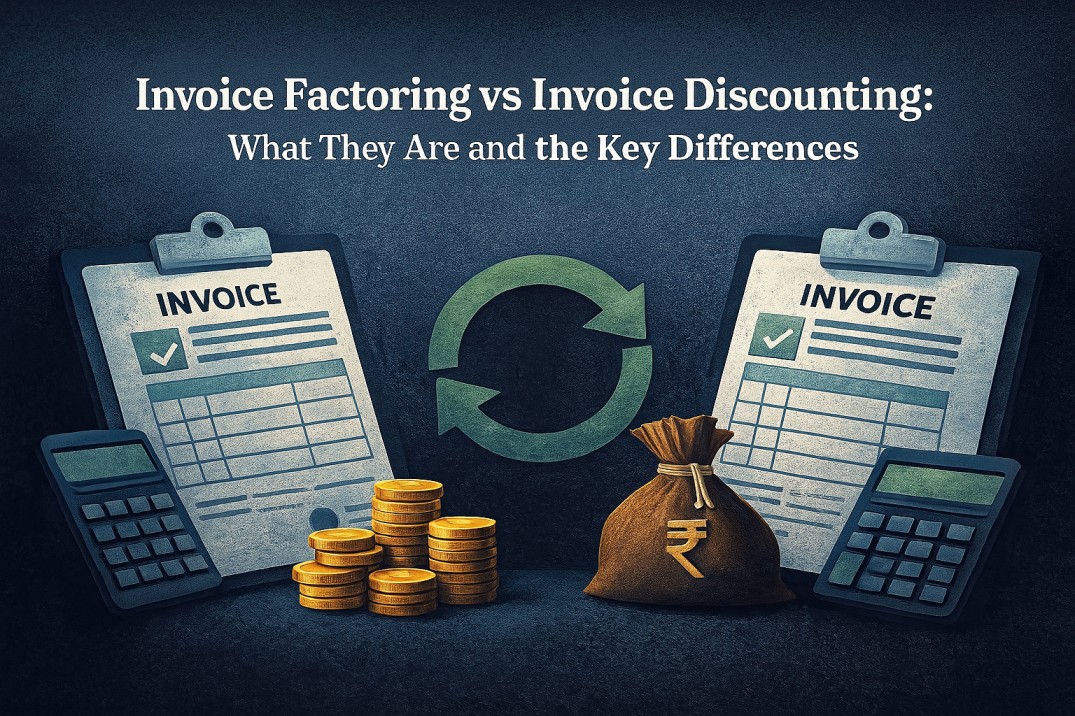
Invoice Factoring vs Invoice Discounting: What They Are and the Key Differences
Key Takeaways
- Invoice factoring vs invoice discounting both help convert unpaid invoices into immediate working capital for businesses.
- Invoice discounting keeps customer relationships confidential, while factoring involves the financier directly with your customers.
- In invoice factoring vs invoice discounting, factoring suits SMEs needing credit control support, while discounting favours larger firms that prefer in-house management.
- Factoring offers higher funding (up to 85%) compared to discounting, depending on customer creditworthiness.
- Choosing between invoice factoring vs invoice discounting depends on business size, financial urgency, and preferred control over collections.
What if your business could turn unpaid invoices into instant working capital, without taking a loan? With over 80% of Indian MSMEs facing cash flow issues, invoice financing is becoming a game-changer.
Two popular solutions, invoice factoring and invoice discounting, can help bridge that liquidity gap. These financing arrangements are effective financial tools that provide access to funds without adding liabilities to your balance sheet. But which one truly fits your business needs?
In this guide, we will break down the differences between invoice factoring vs invoice discounting so you can choose the smarter route to faster growth.
Invoice Discounting: What It Means
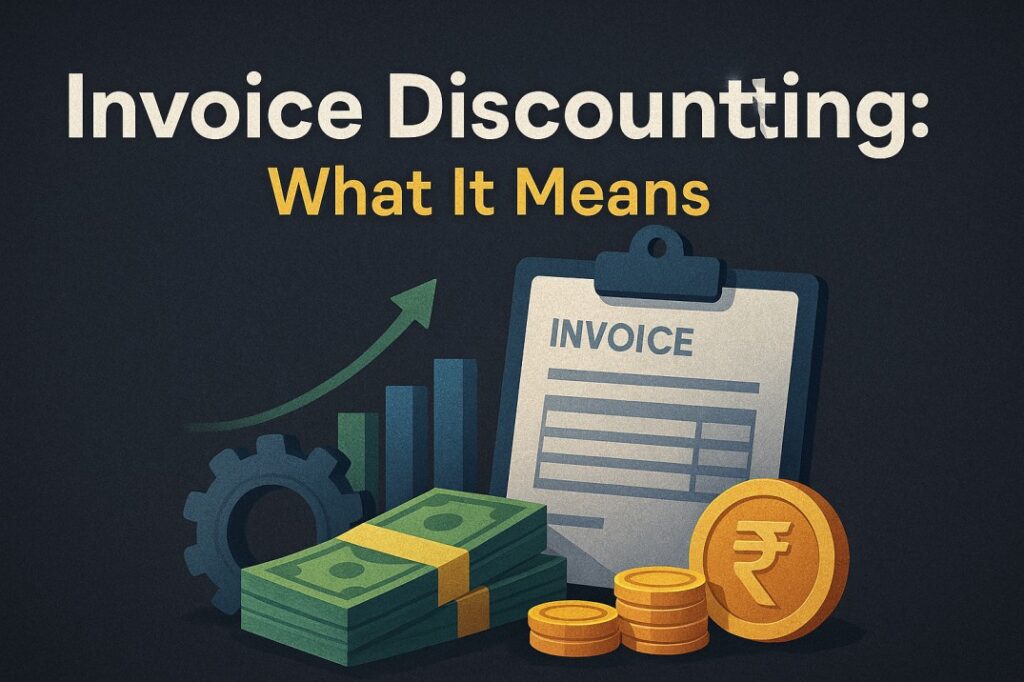
Invoice discounting is a funding option that you can use as a business to raise funds against unpaid invoice payments. The objective of this funding option is to enhance cash flow and working capital for a business through short-term financing.
This financing arrangement is backed by confidentiality (confidential invoice discounting), wherein the customers are not aware of the financing institution involved. Notably, if you are a business raising funds using this option, you might be subject to risks of losing control over the sales ledger or a business venture.
However, this funding option is deemed a convenient choice among financial instruments for businesses regardless of the size of the business. It also does not disrupt existing customer relationships, allowing businesses to retain control over collections and focus on internal bookkeeping tasks.
Invoice Factoring: What It Means
Businesses can sell their outstanding invoices to a third party using invoice factoring. These third parties can include a financing institution or organisation. Once a business sells the individual invoices, the factoring companies remain responsible for processing invoices, management of accounts, credit control and receiving invoice payment from the customers directly.
This receivable financing option helps businesses raise around 60% to 80% of the accounts receivable amount to meet business needs. Further, this option helps businesses shorten their working capital cycle to facilitate access to funds.
As factors are responsible for payment collection from customers, the need to maintain confidentiality is not applicable. The factors that develop customer relationships with the customers of the business are based on payment terms and the range of services offered as part of the agreement.
Thus, this financing option can be appropriate for small businesses and medium-sized companies, especially those needing short-term financing without affecting their financial statements significantly.
Invoice Discounting VS Invoice Factoring: Key Differences
| Parameters | Invoice Discounting | Invoice Factoring |
| Credit Control or Credit Risk | There is a risk of losing control over a company's sales ledger | Service providers gain control over the sales ledger of the concerned company |
| Ownership of Invoices | Business retains ownership. | Factor takes ownership. |
| Value Raised | Depends on the creditworthiness of the business (based on credit ratings) and accounts receivables' value | Businesses can raise up to 85% of the outstanding amount with creditworthy customers. |
| Confidentiality | As the cash ledger is confidential, customers are unaware of the process. | As factors receive payment directly from the customer, no confidentiality is applicable. |
| Collection | Business collects payment from customers | Factors collect payment from customers |
| Suitability | Large and medium-sized businesses | Small and medium-sized businesses |
| Cost | Can be cost-intensive | Cost-effective compared to invoice discounting |
| Impact on Customer Relations | Minimal disruption; direct relationship maintained. | May affect customer relationships due to third-party involvement. |
💡For your bill payments and tracking business transactions, use the PICE App.
Invoice Discounting Vs Invoice Factoring: Which is Right For Your Business?
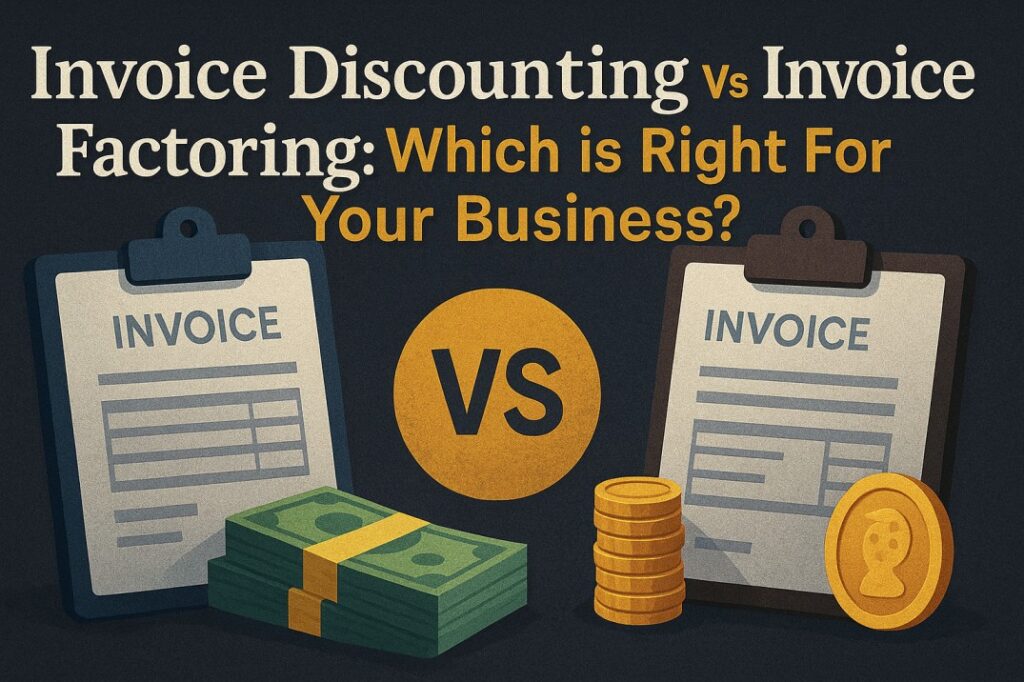
You can choose invoice discounting or invoice factoring based on the following factors:
- Nature of business
- Immediate financial requirement
- Size of business operation
- Credit control ability
- Ability to optimise resources
- Effectiveness in managing the sales ledger
Some of the industries which prefer receivable financing to raise funds are as follows:
- Manufacturing
- Transport
- Security
- Printing
- Construction
- Wholesale
- Recruitment
- Logistics
Conclusion
Understanding the differences between invoice factoring and invoice discounting is key to selecting the right financial tools for your business. If you are a small-scale business looking for quick access to funds and do not mind the financier handling customer payments, invoice factoring may be ideal.
On the other hand, large-scale businesses that prefer to retain control over their sales ledger and customer relationships often benefit more from invoice discounting. Choose the option that best aligns with your operational needs, financial statements, and long-term business goals.
 By
By 







